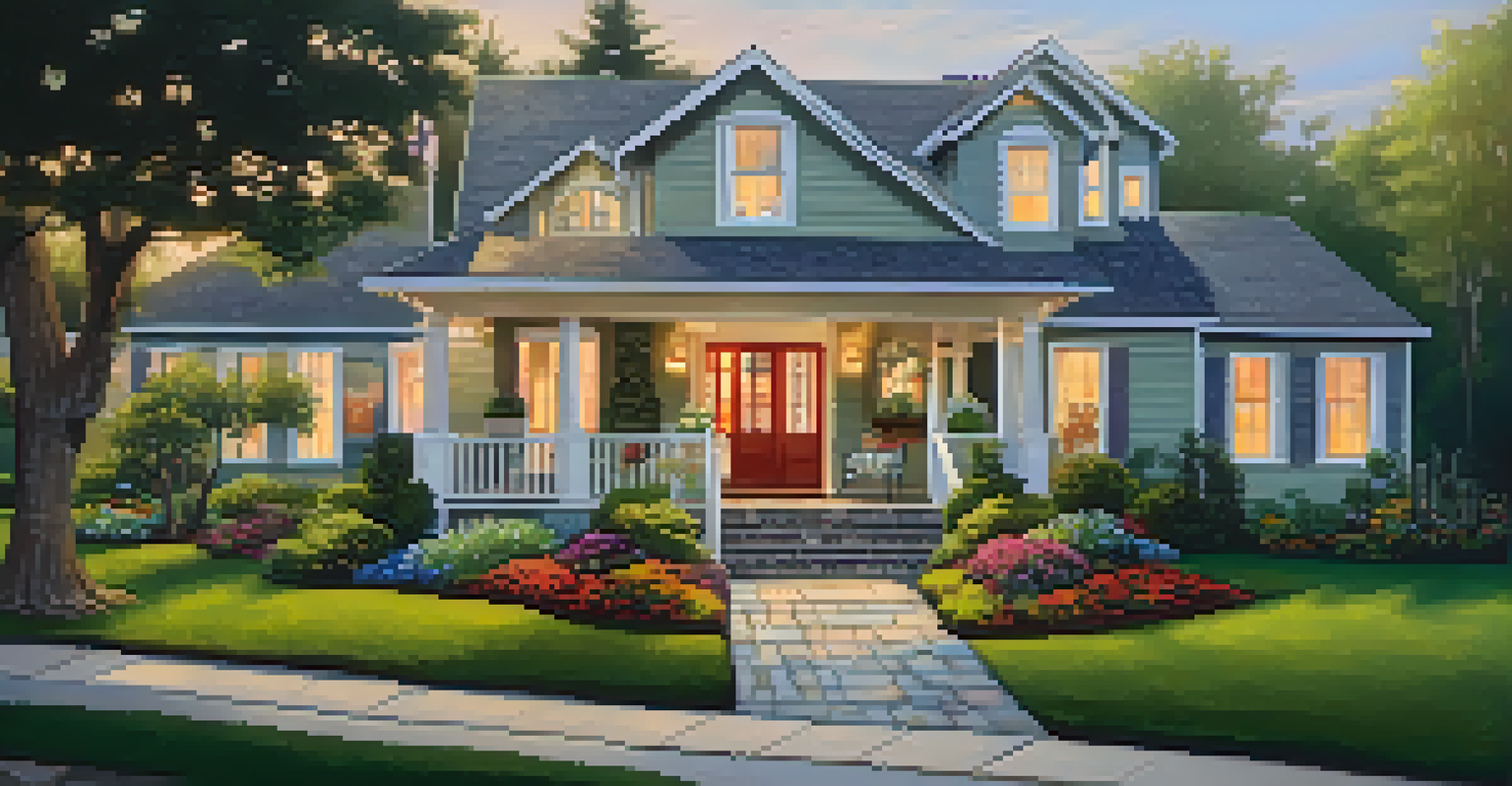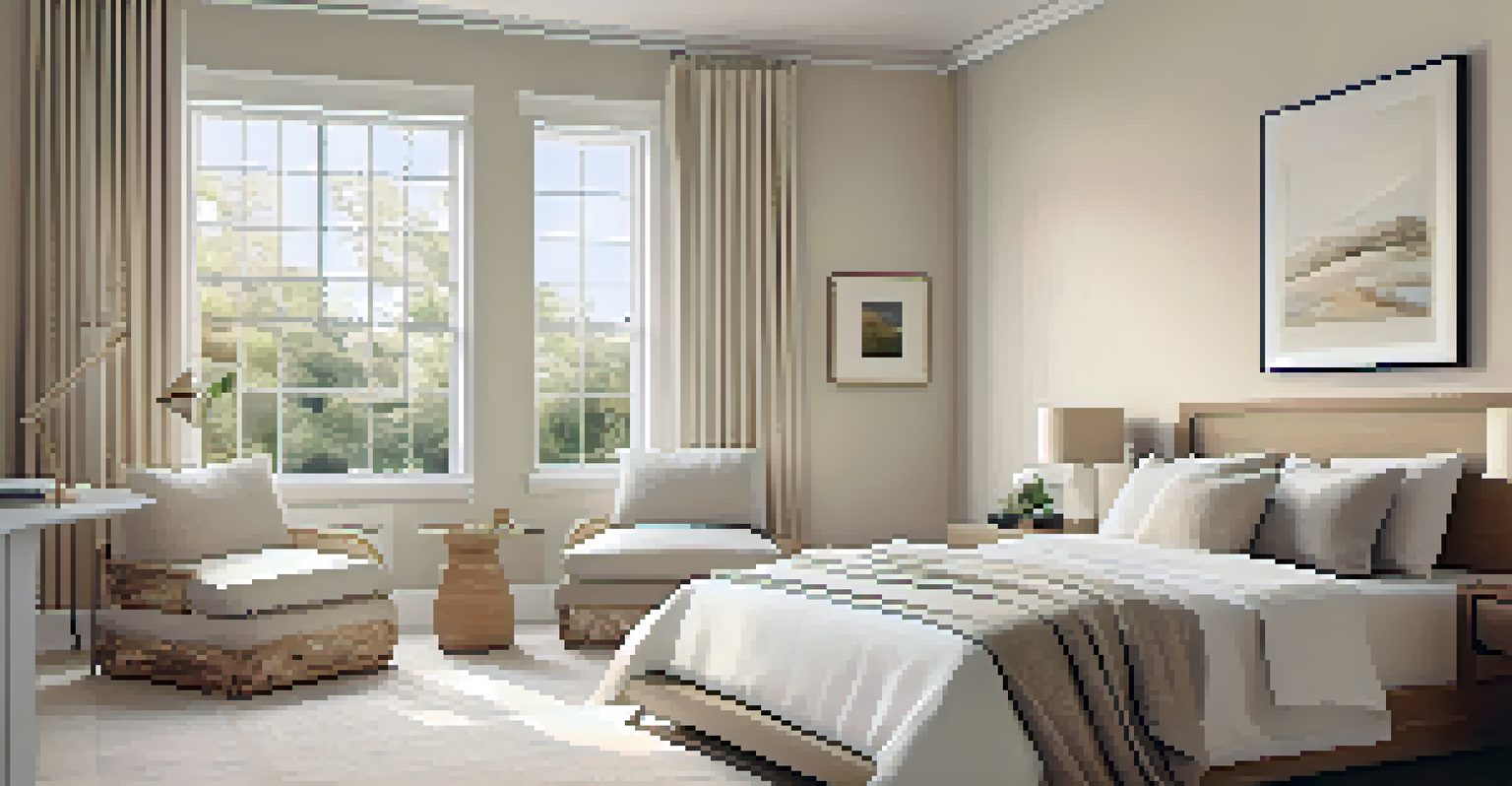Avoiding Common Staging Mistakes: Tips for Success

Understanding the Importance of Home Staging
Home staging is more than just decorating; it's about creating an inviting atmosphere that appeals to potential buyers. Think of it as setting the stage for a play, where every detail contributes to the overall performance. By showcasing your home in its best light, you increase the chances of a quick sale at a desirable price.
Staging a home is like dressing it for a first date; you want it to look its best and make a great impression.
When buyers walk into a well-staged home, they can easily envision themselves living there. This emotional connection is crucial, as it can set your property apart from others on the market. Even simple changes can make a significant difference, turning a cluttered space into a welcoming retreat.
Ultimately, staging is an investment in your home’s future. Though it may require some time and effort, the returns can be substantial. A well-staged home not only sells faster but often fetches a higher price.
Overcrowding Your Space with Furniture
One of the most common staging mistakes is overcrowding a room with too much furniture. While it might be tempting to showcase every piece you own, less is often more in staging. An overcrowded space can feel cramped and uninviting, making it difficult for buyers to see the potential of the home.

Instead, aim for a layout that emphasizes openness and flow. Consider using a few key pieces that highlight the room’s best features, like a beautiful fireplace or a large window. Remember, the goal is to create a space where buyers can envision their own furniture fitting comfortably.
Home Staging Boosts Sale Potential
Creating an inviting atmosphere through staging helps buyers envision themselves in the home, leading to quicker and often more profitable sales.
As you stage, ask yourself if each piece of furniture contributes to the overall ambiance. If it doesn’t, consider removing it. A well-staged room should feel balanced and inviting, allowing potential buyers to move freely and imagine their lives there.
Neglecting Curb Appeal in Your Staging Efforts
Curb appeal is often overlooked, but it plays a vital role in how buyers perceive your home. First impressions matter, and the exterior of your house is the first thing potential buyers will see. A well-maintained yard, a clean entrance, and attractive landscaping can make a significant impact.
You never get a second chance to make a first impression.
Start by tidying up the yard—mow the lawn, trim the hedges, and remove any debris. Simple touches like potted plants or a fresh coat of paint on the front door can make your home feel more welcoming. Remember, the goal is to create an inviting atmosphere that draws buyers in.
Don’t underestimate the power of good lighting as well. A well-lit home exterior can create a warm and inviting feeling, especially in the evenings. By focusing on curb appeal, you can set a positive tone before buyers even step inside.
Ignoring the Power of Neutral Colors
Choosing the right colors for your home is crucial in the staging process. While you may love vibrant colors, bold choices can alienate potential buyers who may not share your tastes. Neutral colors, like soft grays or warm beiges, create a blank canvas that allows buyers to envision their own style.
Painting walls in neutral shades can make spaces feel larger and more cohesive. It helps to draw attention to the home’s features rather than distract from them. Think of it as giving your home a fresh, modern look that appeals to a broad audience.
Curb Appeal Matters Significantly
First impressions are crucial, and enhancing your home's exterior can attract buyers before they even step inside.
Additionally, neutral color palettes can also enhance lighting and create a calming atmosphere. This not only makes the home more appealing but can also evoke a sense of serenity, helping buyers feel at home as they walk through.
Forgetting to Depersonalize Spaces
One of the biggest mistakes in home staging is leaving personal items on display. While your family photos and memorabilia hold sentimental value for you, they can be distracting for buyers. The goal is to help them imagine themselves in the space, which is hard to do with someone else’s memories surrounding them.
Consider removing personal touches, like family portraits or unique collections, and replacing them with neutral decor. Simple artwork or generic decorations can create a more universal appeal. This allows buyers to focus on the home itself rather than your personal stories.
In addition, decluttering surfaces and minimizing knick-knacks can create a cleaner, more open feel. By creating a neutral environment, you invite buyers to envision their own lives in the space, which can significantly increase your chances of a successful sale.
Neglecting the Importance of Lighting
Good lighting can transform a space, making it feel warm and inviting. However, many homeowners underestimate its importance during the staging process. Bright, well-lit rooms are more appealing, while dimly lit areas can appear small and unwelcoming.
To enhance your home’s lighting, start by maximizing natural light. Open curtains and blinds to let sunshine in, and consider using mirrors to reflect light around the room. Additionally, ensure that all light bulbs are functioning and that fixtures are clean and modern.
Neutral Colors Enhance Buyer Appeal
Using neutral colors allows potential buyers to imagine their own style in the space, making it more universally appealing.
Layering different types of lighting, like ambient, task, and accent, can create a well-rounded atmosphere. This approach adds depth to the space and makes it feel more lived-in, which can help buyers picture themselves there.
Not Investing in Professional Staging Help
While DIY staging can save money, it often lacks the expertise that professionals bring to the table. Hiring a professional stager can elevate your home’s presentation, ensuring that it appeals to the widest range of buyers. They understand market trends and can make strategic choices that you may not consider.
Professional stagers have a keen eye for design and can provide valuable insights tailored to your specific property. They know how to highlight your home’s strengths while downplaying its weaknesses. This expertise can make a significant difference in how quickly and successfully your home sells.

If hiring a stager feels out of reach, consider at least consulting with one. Many offer advice and tips that you can implement yourself. Investing in staging help can ultimately lead to a faster sale and a higher selling price.